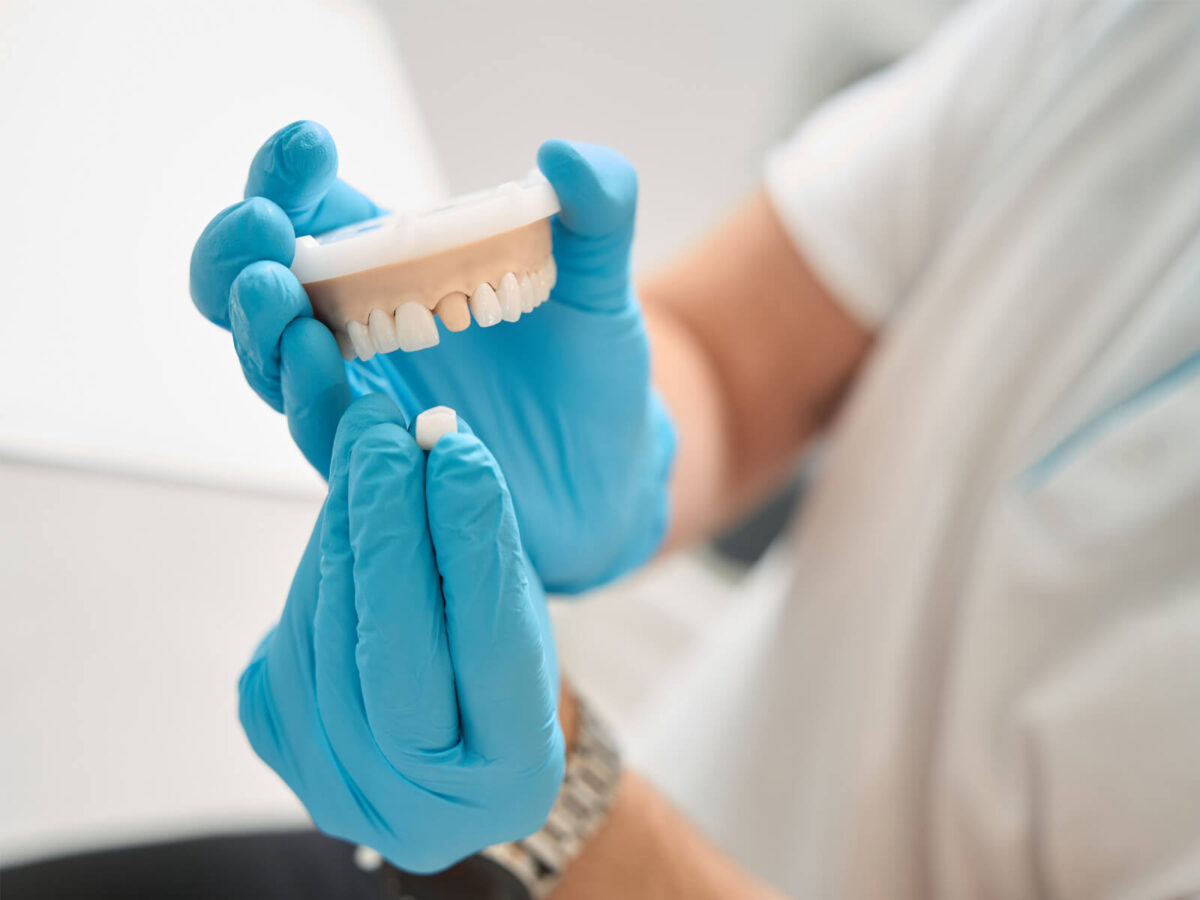River Walk Dental Orthodontics
Blog
Dental hygiene tips for healthy teeth & gums

Can I Leave My Temporary Crown Off?
Temporary crowns play an essential role in dental restoration, serving as placeholders until permanent crowns can be placed. While it may be tempting to consider leaving a temporary crown off, it is critical to understand the purposes of temporary crowns and the potential consequences of disregarding their importance. This article will review the functions of temporary crowns, the risks associated with their removal, and the necessity of following your dentist’s advice.
Temporary Crown Functions:
- Protection of Prepared Tooth:
A tooth that has been prepared for a crown may be more susceptible to injury, sensitivity, or bacterial invasion. The temporary crown acts as a barrier, shielding the prepared tooth until the permanent crown is ready.
- Maintaining Dental Alignment:
Temporary crowns play a crucial role in preserving the alignment of adjacent and opposing teeth. They help maintain your natural bite and prevent neighboring teeth from shifting during the period between tooth preparation and crown implantation.
- Aesthetic Continuity:
Temporary crowns contribute to the visual continuity of your smile. While they may not be as long-lasting or precisely matched as permanent crowns, they provide a natural appearance and help you maintain confidence in your smile while awaiting the final restoration.
- Preventing Tooth Sensitivity:
The prepared tooth can become more sensitive to temperature changes, air, and pressure in the absence of a temporary crown. During this interim period, the temporary crown reduces sensitivity and discomfort.
The Dangers of Removing Temporary Crowns:
- Vulnerability of the Teeth:
A prepared tooth that is left unprotected by a temporary crown becomes vulnerable to injury. It may be more prone to fractures, chipping, or other forms of damage, potentially jeopardizing the overall success of the restoration.
- Discomfort and Sensitivity:
An exposed tooth can become sensitive to hot or cold temperatures, air, and pressure when not covered by a temporary crown. This discomfort can interfere with your ability to eat and drink comfortably.
- Changes in Dental Alignment:
The absence of a temporary crown can lead to alterations in dental alignment. Adjacent and opposing teeth may gradually shift, affecting your overall bite and complicating the fitting of the permanent crown.
- Risk of Bacterial Overgrowth:
An unprotected prepared tooth is more susceptible to bacterial infiltration. Bacteria can enter the exposed tooth structure, leading to decay or infection. This can compromise the outcome of the crown restoration and necessitate additional treatments.
- Aesthetic Concerns:
The absence of a temporary crown can impact the aesthetics of your smile, especially if the prepped tooth is in a visible area. This may result in self-consciousness and a reduced sense of confidence in social situations.
Examples of When Temporary Crowns Can Be Removed:
While it is typically not advisable to remove a temporary crown without consulting your dentist, there are certain circumstances in which removal may be necessary, such as:
- Loose or Dislodged Temporary Crown:
If your temporary crown becomes loose or dislodged, it is essential to contact your dentist immediately. Leaving it off can put the prepared tooth at risk, necessitating prompt attention.
- Severe Pain or Discomfort:
If you experience extreme discomfort or severe pain due to the temporary crown, it is advisable to consult your dentist. They will assess the issue and determine the appropriate course of action.
In some cases, including allergic reactions or chronic issues with the temporary crown, your dentist may recommend its removal and replacement.
Conclusion:
Temporary crowns play a vital role in dental restoration by providing protection, maintaining alignment, and ensuring aesthetic continuity. While there may be specific situations where a temporary crown requires attention or removal, it is generally unwise to leave it off without consulting your dentist.
The risks associated with exposing a prepared tooth without protection can jeopardize the overall success of the restoration. If you have any questions or concerns regarding your temporary crown, consult with your dentist to ensure proper care and a smooth transition to the permanent crown.
